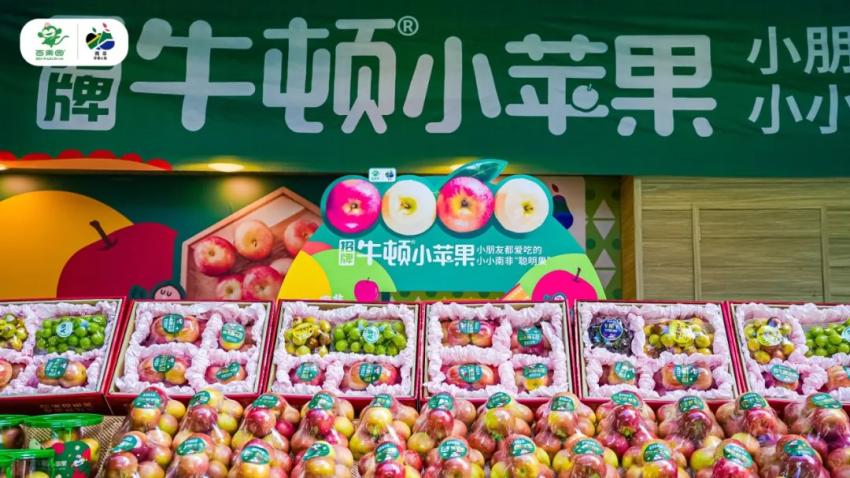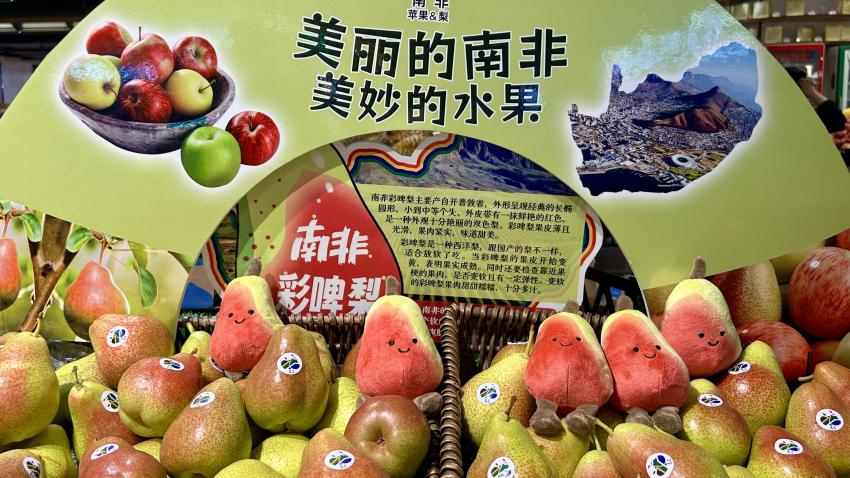You are here
Back to top2014 China Fruit and Vegetable Export Trade Authority Parsing
China produced more than 260 million tons of fruit and more than 700 million tons of vegetables in 2014. Despite these impressive figures and the fact that China is a significant fruit and vegetable producer, it has yet to realize its potential as a fruit and vegetable trading power. According to a report from the Ministry of Commerce of the People's Republic of China entitled “China's Agricultural Products Import and Export Statistics Data 2014,” China's vegetable exports rose by 4.5% in 2014 to a total value of $8.229 billion. Similarly, Chinese fruit and nut exports in 2014 grew to $4.318 billion, an increase of 3.5% from 2013.
In recent years, Chinese exports of fruits, vegetables, and nuts have experienced steady and stable growth rates, with special emphasis and priority still being placed upon exports of apples, pears, and differing varieties of citrus; main export destinations remain the countries of Southeast Asia and the Russian Federation. Shandong apples, Shandong and Hebei pears, and Fujian citrus and ganglia were among the most common exports. The biggest weaknesses in China's fruit and vegetable export trade remains the single export trade market, the disproportionate amount of attention given and importance assigned to lower-end markets, and a lack of well-known or familiar brands.
The apple export trade in 2014
Totaling 865,000 tons in 2014, China's apple exports fell by 13% as compared with 2013, with the total export value also declining by 0.2% to $1.028 billion; however, the average unit price rose 14.7% in 2014, reaching $1,187.90 per ton. 90% of China’s total apple exports were concentrated in markets in Asian countries, most notably Indonesian and Burmese markets, with the next largest market being Russia. Russia’s embargo of agricultural products from the European Union created certain opportunities for Chinese fruit and vegetable exports to Russia, but due to unsolved logistical problems, only a rather limited quantity of fruit and vegetable exports were able to reach Russia's main consumer hubs in Moscow and St. Petersburg.
Since 2006, China's apple exports have experienced an average annual increase in price of about 20%, and in 2014, prices for China's apple harvest surpassed even those of main international apple producers. At the same time, due to adverse climate conditions, production declined in Shanxi and Shaanxi, China’s main production and harvest areas for apples, which was also accompanied by a drop in product quality. The continued trend of substantial increases in average unit prices year-over-year and decline in total apple output were the two primary reasons for the overall decline experienced by Chinese apple exports in 2014 as compared to a year earlier.
Concerning the mode of export trade, Chinese enterprises are accustomed to concentrating sales efforts in the period of time after the first apple harvest, which results in the highest volume of exports occurring between November and February. This does not correlate with the period of highest prices in main apple export destination countries, which occurs between July and October, representing a loss in potential sales. At the same time, due to the Christmas and New Year’s holiday seasons, international importers tend to secure apple supplies two months in advance of these holidays; it is therefore a necessity for Chinese enterprises to change their existing sales habits and develop and enter the marketplace with their goods before apple harvest.
China apple exports are mainly concentrated in the low-end market. High-end markets such as Europe and the United States account for only roughly 15% of total apple exports. In addition to European countries and the United States, Canada, Australia, South Africa, Argentina, and Chile currently allow Chinese apple imports. In order to further an opening up of the Chinese apple high-end international market for 2015, the AQSIQ and the USDA have signed the “Chinese Apple Imports Plant Quarantine Work Plan,” which opened the door for Chinese apples to achieve widespread market access in the United States. Consequently, apples from Shanxi, Shandong, Liaoning, and other apple-producing locations in China were able to obtain “visas” to enter the United States and become available to American consumers.
Citrus exports in 2014
From January to December of 2014, China exported 980,000 metric tons of citrus fruit, which was a decline of 5.9% from a year earlier. However, the total value of exports rose by 1.2% to $1.17 billion and the average unit price increased by 7.6% to $1,194.20 per ton as compared to 2013 figures. In 2014, traditional Asian markets for Chinese citrus exports accounted for 76% of total international citrus exports from China, followed by Europe at 21.74% and North America with 2.24%.
In 2014, the main sources for Chinese exports of citrus were five provinces, with Fujian and Guangxi being the largest among these. According to the report, from January to October of 2014, Fujian province accounted for 50.8% of citrus exports with a total tonnage of 122,000, with grapefruit exports from Fujian similarly accounting for 27.1% of exports at 65,000 total tons. To facilitate expansion into high-end markets such as Europe and the United States, China’s Department of Quality Inspection and Agriculture helped enterprises to attain numerous different qualification certificates, as well as to supply technological testing services for key enterprises which for the time being lacked detection capacities. Additionally, this department supported export enterprises in establishing quality traceability systems, in perfecting public service platform construction, in guiding enterprises in the pursuit of international market development, and finally in improving the overall quality of export products in these two provinces.
Pear export trade in 2014
In 2014, China's pear exports experienced a decline of 22% from 2013, totaling 297,000 tons for the year. Similarly, the value of exports fell by 3.1% to a total amount of $350 million. Nonetheless, the average unit price grew to a substantial $1179.60 per ton, an increase of 24.3% as compared to a year earlier. The top five province of origin for China's pear exports in 2014 were Hebei, Shandong, Guangdong, Guangxi, and Fujian.
Taking a closer look by region breakdown, the areas of decline in exports of Chinese pears in 2014 as compared with 2013 were as follows:
Asia - 242,000 total tons, a decrease of 26%
Africa - 203.4 total tons, a decrease of 28.5%
South America - 215.5 total tons, a decrease of 50.2%
North America - 18,000 total tons, a decrease of 2.4%
Europe - 36,000 total tons, an increase of 9.6%
Oceania - 1,800 total tons, an increase of 22.4%
In the context of the overall decline of pear exports from China in the trade environment, Hebei fresh pear exports constitute more than 60% of China’s whole pear export market, with Hebei pear exports chiefly concentrated in North American and Southeast Asian markets. Nevertheless, new and recent developments concerning the Russian market continue to the steadily increasing growth rates for Chinese exports in that market in recent years. Hebei fruit and vegetable enterprises export via the so-called ‘green channel,’ which utilizes release ports’ “zero check” method, not only saving on stranding costs, but also reducing storage costs and railway travel time.
Source: China Fruit and Vegetable Fair
Photo Source: Pixabay















Add new comment